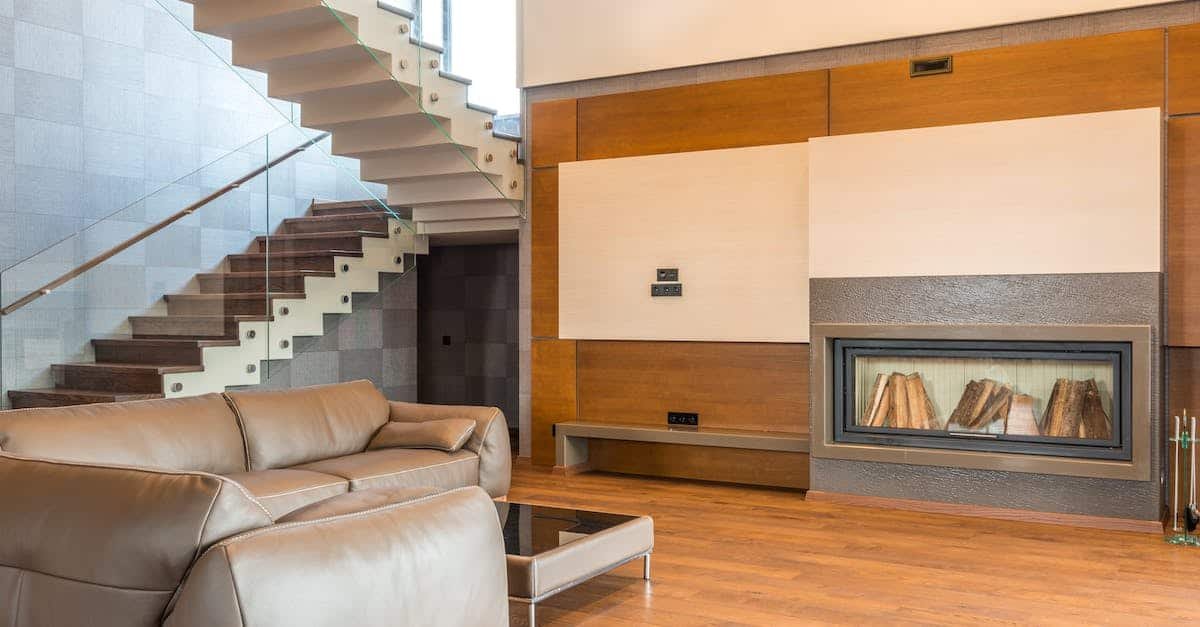So you’re ready to take your gardening to the next level with raised garden beds? Choosing the right wood can be a game-changer for the health of your plants and the longevity of your beds. But with so many options, how do you pick the best one?
Benefits of Raised Garden Beds
As an avid woodworker, you know how transforming a mere plank of wood into a functional creation can feel. Now imagine that with raised garden beds. Not only do they enhance the look of your garden, they offer a multitude of benefits from an agricultural perspective.
Ease of Use is a standout advantage. You don’t need to aimlessly bend or kneel for long periods; the raised design brings the garden to you. It’s a game-changer for your back and knees, and a prime example of accessibility meeting hobby.
Raised beds promote Better Soil Conditions. They allow you to customize your soil mix, improving drainage and fertility. Think of them as custom-made suits for your plants – tailored to ensure the perfect growing environment. By elevating the soil, it warms up faster in the spring, giving you a headstart on the growing season.
The Controlled Environment of a raised bed helps you keep a tighter rein on your growing space. You can more effectively prevent weeds, manage water, and fend off pests. It’s the equivalent of building a fort – except this one’s for your prized tomatoes, not a childhood fantasy.
And don’t forget about Crop Yield. Because you’re working with superior soil and better conditions, your raised beds can be more productive than traditional gardening spots. They might take up less space, but they pack a punch when it comes to output.
Let’s not overlook the Aesthetic Appeal. Raised garden beds bring a structured, tidy look to your outdoor space. Eye-catching and functional, they’re a testament to the woodworking craft, meshing artistry with agriculture.
By integrating raised garden beds, you’re not just crafting wood; you’re crafting an ecosystem. It’s an extension of your passion for woodwork manifesting in lush, vibrant life right in your backyard.
Factors to Consider When Choosing Wood
When diving into your gardening project, you’ll get your hands dirty, but before plunging into the soil, you’ve got to pick the perfect timber. Dreaming up your raised garden beds is akin to crafting a masterpiece in your woodshop – every detail matters.
First off, consider durability – this is the wood’s resistance to decay and rot. After all, you want your hard work to withstand the test of time and the elements.
- Cedar and redwood are champions for longevity
- Douglas fir is a cost-effective alternative with a decent lifespan of about 7 to 10 years.
Next, think about wood treatment. Sure, pressure-treated wood boasts an extended life, but be cautious – chemicals used in treating can leach into your soil and crops. Stick to untreated, naturally rot-resistant options to keep your veggies safe.
- Avoid wood treated with creosote or CCA (chromated copper arsenate)
Sustainability plays a key role, too. Are you sourcing your timber responsibly? Be mindful of the ecological footprint you’re leaving with every board you lay.
- Choose local, sustainably harvested wood to lower transport emissions and support your community’s economy
Lastly, it’s the cost factor. You’re not looking to break the bank, but you also don’t want to skimp on quality.
- Budget-friendly options like pine are available, but remember they may not hold up as long as their pricier counterparts
Slide on your woodworking gloves, and consider these factors closely as you handpick the wood that’ll frame your garden treasures. Just like selecting the right wood for a custom coffee table, choosing the best wood for your raised garden beds will ensure a blend of functionality, durability, and aesthetic pleasure.
Cedar: The Top Choice for Raised Garden Beds
When you start to scout for the ideal wood for your raised garden beds, cedar often stands out from the options available. And there’s good reason for that. This wood not only exhibits natural beauty but also offers impressive longevity, especially when it’s put to the test against outdoor elements. Think of cedar as your garden’s best friend – it’s the one you can rely on season after season.
Cedar, specifically Western Red Cedar, boasts natural oils that act as preservatives, deterring pests such as termites and reducing decay. What does this mean for you? Less maintenance, fewer concerns about pest invasions, and ultimately, more time to focus on what you love: growing your garden.
The wood’s ability to resist warping and shrinking is yet another plus. Moisture, which can wreak havoc on other types of wood, is less of a concern with cedar. This resistance ensures that the aesthetic appeal of your garden beds remains fresh and untarnished, year after year. Here are a few key benefits of using cedar:
- Long-lasting and durable
- Naturally rot-resistant
- Aromatic qualities that repel insects
Besides its functional advantages, cedar is a sustainable option. It grows quickly and is often harvested from well-managed forests. This means that by choosing cedar, you’re making an eco-friendly decision that aligns with your commitment to sustainability.
Price can be a concern; cedar is on the pricier side. However, consider it an investment in your garden’s future. The up-front cost may be higher than other woods, but the longevity and reduced maintenance of cedar will save you money in the long run.
As you continue to plan your garden, weigh these benefits of cedar against your needs and preferences. Remember, the quality of your harvest starts with the quality of your garden bed, and cedar offers an excellent foundation for vibrant growth and fruitful yields.
Redwood: A High-End Alternative to Cedar
When you’re searching for durability and visual appeal for your raised garden beds, look no further than redwood. This timber rivals cedar in its resistance to rot and pests, due in part to the presence of natural oils and tannins. Redwood’s heartwood is especially resilient, offering a robust defense against the elements that’s necessary for an outdoor project like a garden bed.
Moreover, redwood brings a unique aesthetic quality to your garden space. Its rich, warm tones add a level of sophistication that complements any outdoor area. Over time, redwood tends to age gracefully, developing a silver-gray patina that many find appealing in a natural landscape setting. Keep in mind though, if you’d prefer to maintain the original color, a seasonal application of sealant will do the trick.
Cost-wise, redwood is generally more expensive than cedar. But don’t let that deter you. Investing in redwood is not just about buying wood; it’s about purchasing a lasting element for your garden. With proper care, redwood raised beds can last years, if not decades, making the initial investment worthwhile in the long run.
Sustainability is also a focal point with redwood. It’s often sourced from responsibly managed forests which aligns with the eco-conscious values many gardeners hold dear. By choosing certified sustainably harvested redwood, you’re not only creating a haven for your plants but also supporting environmental stewardship.
Incorporating redwood into your garden project will require the same woodworking skills as working with cedar. While both woods cut cleanly, redwood’s softness can make it slightly easier to work with. This characteristic is a boon if you love getting your hands dirty in your weekend DIY projects. Whether drilling, cutting, or finishing, redwood responds well to all woodworking techniques, ensuring a smooth and satisfying building experience.
Other Wood Options for Raised Garden Beds
If redwood and cedar are out of your budget or just not your style, you’ve still got plenty of options. Let’s talk about Douglas fir—it’s a common choice due to its availability and lower price point. You’re not sacrificing much on durability, as it can last a good 5 to 7 years with proper care and maintenance. However, you’ll want to treat it with a safe preservative to extend its life.
Then there’s pine. It’s the budget-friendly hero of the woodworking world. It’s soft, which makes it easy for you to work with, though it may not hold up as well as some other woods in the longevity department. Pressure-treated pine can resist rot and pests better, but make sure it’s rated for ground contact and that the chemicals used are safe for your garden.
You might also consider composite wood, which can be a little pricey but offers consistency and longevity. This modern option is made from recycled materials and is practically impervious to rot. Just remember that working with composite means swapping out your wood blades for carbide ones.
| Wood Type | Durability | Price | Maintenance |
|---|---|---|---|
| Douglas Fir | 5-7 years | $ | Medium |
| Pine | Varies | $ | High |
| Composite Wood | Long-term | $$ | Low |
Remember the pride you’ll feel when you’re planting your first seedlings into the beds you built with your own hands. Choose the wood that fits your vision of the perfect garden, keeping in mind the balance between aesthetics, workability, and resilience to the elements. Whatever wood you decide on, be sure to treat it right, and it’ll keep your garden growing strong for seasons to come.
Conclusion
You’ve got a lot to consider when picking out wood for your raised garden beds. Whether you prioritize longevity, cost, or sustainability, there’s a material that’s just right for your garden’s needs. Remember, the perfect choice balances the look you love with practicality and durability. Don’t be afraid to mix and match or try something new—after all, your garden is a reflection of your creativity and care. Happy gardening!
Frequently Asked Questions
What is the best type of wood for raised garden beds?
Cedar is considered the best wood for raised garden beds due to its natural resistance to rot and pests. It has a durability of 10-15 years.
How long does Douglas fir last for raised garden beds?
Douglas fir is a common choice for raised garden beds with an average lifespan of 5 to 7 years.
Is pine a good option for raised garden beds?
Pine is a budget-friendly and easy-to-work-with option for raised garden beds, but it may not be as durable in the long term compared to other woods like cedar.
What are the benefits of using composite wood for raised garden beds?
Composite wood, made from recycled materials, is resistant to rot and is a modern alternative for raised garden beds, offering longevity and low maintenance.
How should I choose the wood for my raised garden bed?
When choosing wood for a raised garden bed, consider the aesthetics, workability, and resilience to the elements to match your vision for the perfect garden.




